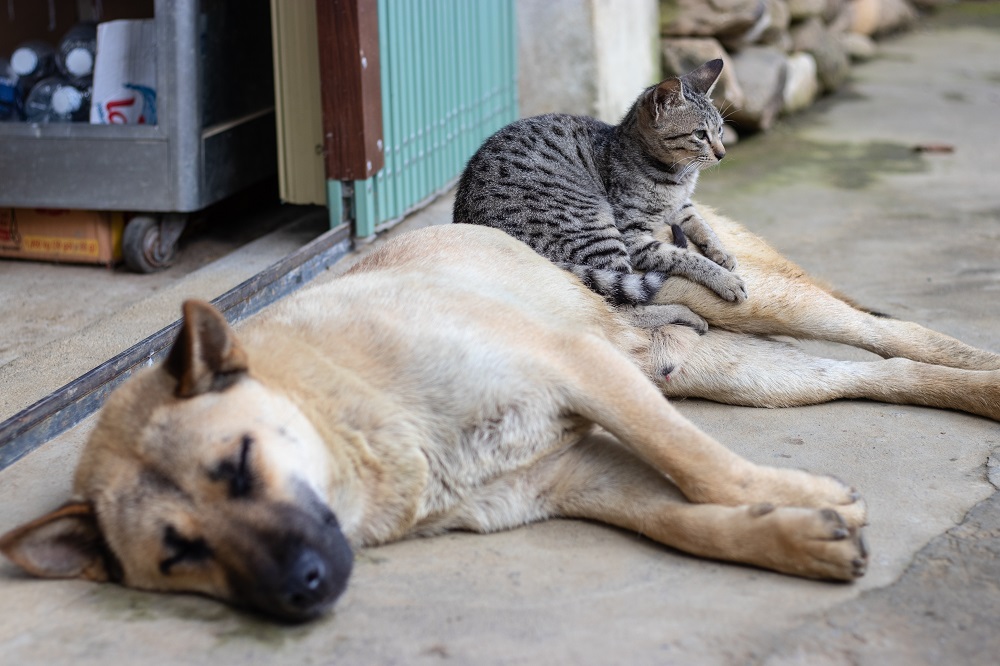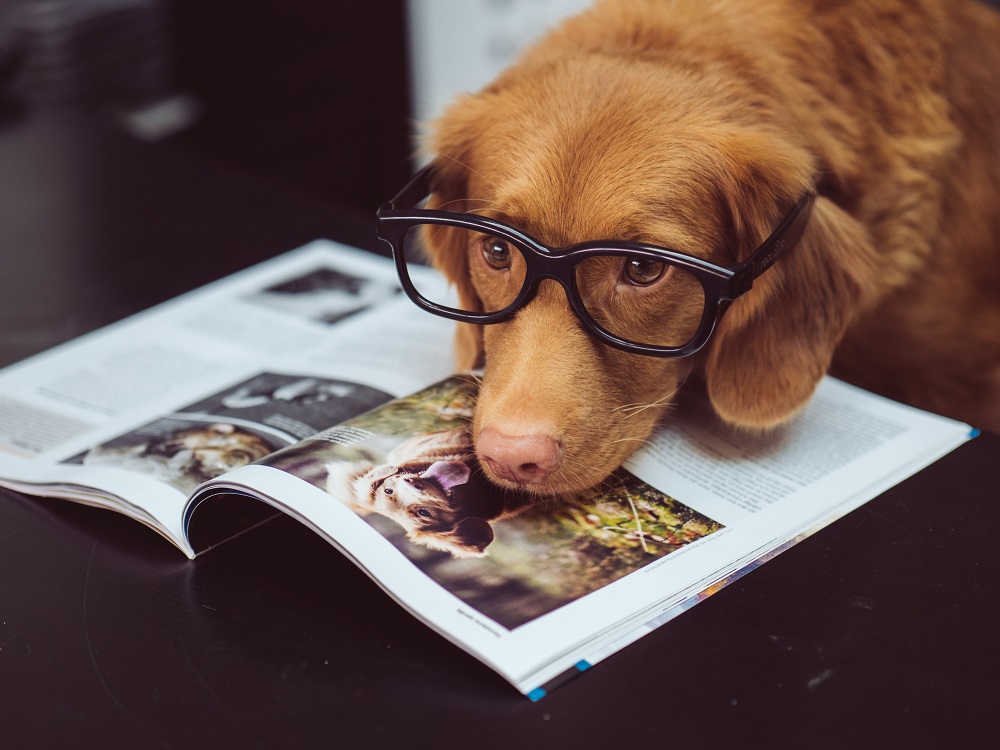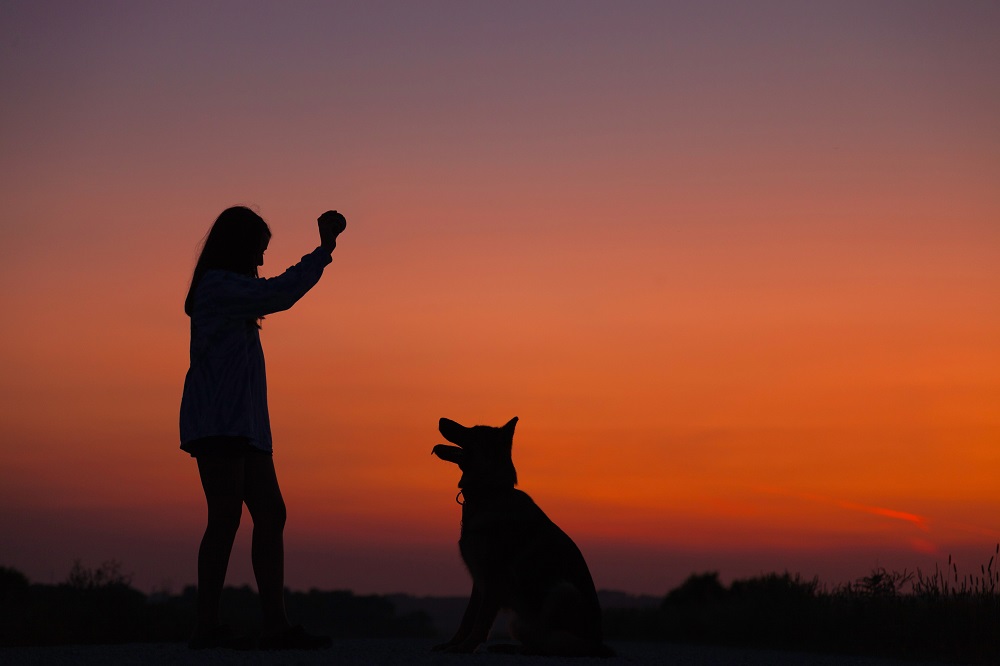The bigger the dog, the bigger everything needs to be—including toys, bowls, and beds. While some giant dogs are happy and content living in small spaces, you do need to have enough space for the things they need. It’s also important to keep in mind that not everyone or everywhere is going to be giant-dog-friendly. Many apartments and hotels have weight limits for dogs, which giant breeds far exceed. It can also be much more challenging to find skilled and qualified care from dog sitters or walkers.
This powerful working dog is a natural in the water. The breed has webbed feet and a water-repellent outer coat, and was first developed to work with Canadian fishermen pulling fishing nets out of icy water and performing heroic water rescues. These giant water dogs are still used in water rescue around the world. In addition to its massive size, the Newfoundland is known for its gentleness and trainability.
These giant terriers are as imposing as they are intelligent. The Black Russian Terrier was developed by the Soviet government in the 1930s to create a powerful guard dog. The dogs maintain those protective qualities, are very loyal to their families, and will often be aloof with strangers. These large dogs should be both powerful and have a reliable temperament.
Dating back to ancient Rome, Neapolitan Mastiffs are giant and powerful dogs. Visually striking with their loose wrinkles and folds of skin across their body, these dogs are easy to spot and are very protective of their families. Like other highly protective breeds, the Neapolitan Mastiffs thrive with consistent positive reinforcement training.
With a broad, wrinkled forehead, the Mastiff is a dignified, courageous, and docile breed. Known for their devotion and loyalty to their families, Mastiffs are naturally wary of strangers, making early socialization important. After World War II, approximately only 14 Mastiffs survived in all of England. The breed’s population was later established with the collaboration of breeders in the United States. Mastiffs are emotional and sensitive and thrive with early positive-reinforcement training.
Extra-Large Dog Breeds: How to Decide on the Best Huge Dog?
Different people value different things when picking a huge dog, so breed-to-breed comparisons are obviously a bit subjective. However, there are a few criteria that are pretty universally desirable.
And while few large dog breeds possess every one of these traits, the best giant dog breeds we identified mostly exhibit the following:
People have varying definitions for words like “large” and “extra-large” when discussing dogs. There is no single authority that establishes a consistent definition for these terms.
That being said, we consider big dog breeds to be between 45 and 90 pounds, while extra-large, huge, or giant dog breeds should weigh more than 90, and typically more than 100 pounds.
Some females (who are generally smaller than males) may not eclipse this size. But if most members of a breed reach the 90- to 100-pound mark, we consider them to be an extra-large, or giant dog breed.
Everyone wants a big friendly dog – that’s kind of the point of adding a pet to your family in the first place. A friendly temperament is extremely important for huge dog breeds, given the potential danger they can represent.

Fortunately, the vast majority of large dog breeds are incredibly friendly and affectionate with their families.
Nevertheless, some extra-large dog breeds are typically friendly with their owners, yet aloof or suspicious of strangers. Such dogs require early socialization so that they learn to distinguish between threatening strangers and harmless ones.
Nobody wants a dog who isn’t able to learn routines or interact with their owners in rewarding ways. Fortunately, most extra-large and giant dog breeds are pretty sharp, and they tend to figure things out and learn quickly.

Note that intelligent dogs can become bored or frustrated more quickly than dogs with less brainpower, so be sure that you keep smart dog breeds well exercised and properly stimulated. Make sure you provide them with plenty of toys and spend lots of time playing with them.
While many people assume that intelligent dogs are always easy to train, this isn’t necessarily the case. Some very intelligent huge dog breeds simply aren’t interested in pleasing their owners the way others are, which can make it difficult to teach them basic dog training commands.

Experts are often able to train such breeds, but the average pet owner will struggle to do so. As such, we tried to include only easily trained breeds below.
Are you in the process of training your dog? Check out our review on the best electric dog training collars.
Unfortunately, some dog breeds characteristically suffer from more health problems than others do. This not only causes your pet to suffer, but it may also shorten his lifespan too.
Health problems will also hit you in the wallet, as you are forced to pay for expensive veterinary services and medications.
This doesn’t mean that the breeds listed below never suffer from health problems – all breeds do. However, we tried to avoid those breeds who are well-known for the health problems they experience.
All dogs need plenty of exercise, but some of the extra-large dog breeds are especially energetic.
This can cause problems for even the most active families. As a result, we’ve tried to restrict our list to those giant breeds who have reasonable energy levels and exercise requirements.
These very large breeds will still require plenty of long walks and regular playtime at the park. However, they won’t require you to go on a 5-mile hike every morning to prevent them from destroying your home.
Is a lab a large or XL dog?
The Labrador retriever is considered a medium to large-sized dog breed. Strong and athletic, they are the perfect size companion most any outdoor activity, especially water sports.
Officially, any dog breed over 50 pounds but under 100 pounds will be considered a large dog breed. More loosely, any dog over 50 pounds is a large dog.
Most Pitbulls measure between 17″ to 21″ and weigh 30 to 60 pounds. American Bully XL, as the name suggests, are larger with males standing at 20″ to 23″ tall at the wither and females at 19″ to 22″. American Bullies XLs can weight 80 to 150 pounds.
WHAT EXACTLY IS AN XL PITBULL, IT’S NOT AN AMERICAN BULLY
The Akita is a popular breed with many unique traits. Learn all about this loyal, intelligent dog in our complete Akita guide.
With an ancient history, the Anatolian Shepherd is a loyal and intelligent guardian. Get all the facts about this dog in our complete Anatolian Shepherd guide.
The Bernese Mountain Dog is a popular breed with many unique traits. Learn about this large, affectionate dog in our complete Bernese Mountain Dog guide.
This is the consummate guard dog who absolutely loves their family. In fact, they used to guard the diamond mines in South Africa.
The Bullmastiff is truly a gentle giant. From loyal guardian to loving companion, learn about this wonderful dog in our complete Bullmastiff guide.
Read our complete Cane Corso guide and discover whether this breed is a good fit for your personality and lifestyle.
Learn Dogue de Bordeaux 101, from personality to history in our complete Dogue de Bordeaux guide.
Looking for facts and information on the Great Dane? These dogs are gentle giants. Check out our complete Great Dane guide to learn more about this breed.
If youre cool with copious shedding, willing to patiently train them, and have some outdoor space for your Pyr to stroll, this dog is an excellent choice.
If youre looking for a majestic yet warm breed, check out our complete Greater Swiss Mountain Dog guide, and you might just find your dream dog.
Looking for Irish Wolfhound facts and information? Theres a lot to like about this fascinating breed! Read our complete Irish Wolfhound guide to learn more.
Big, happy-go-lucky and playful, the Leonberger can be lots of fun but takes a fair amount of work. Get all the facts in our complete Leonberger guide.